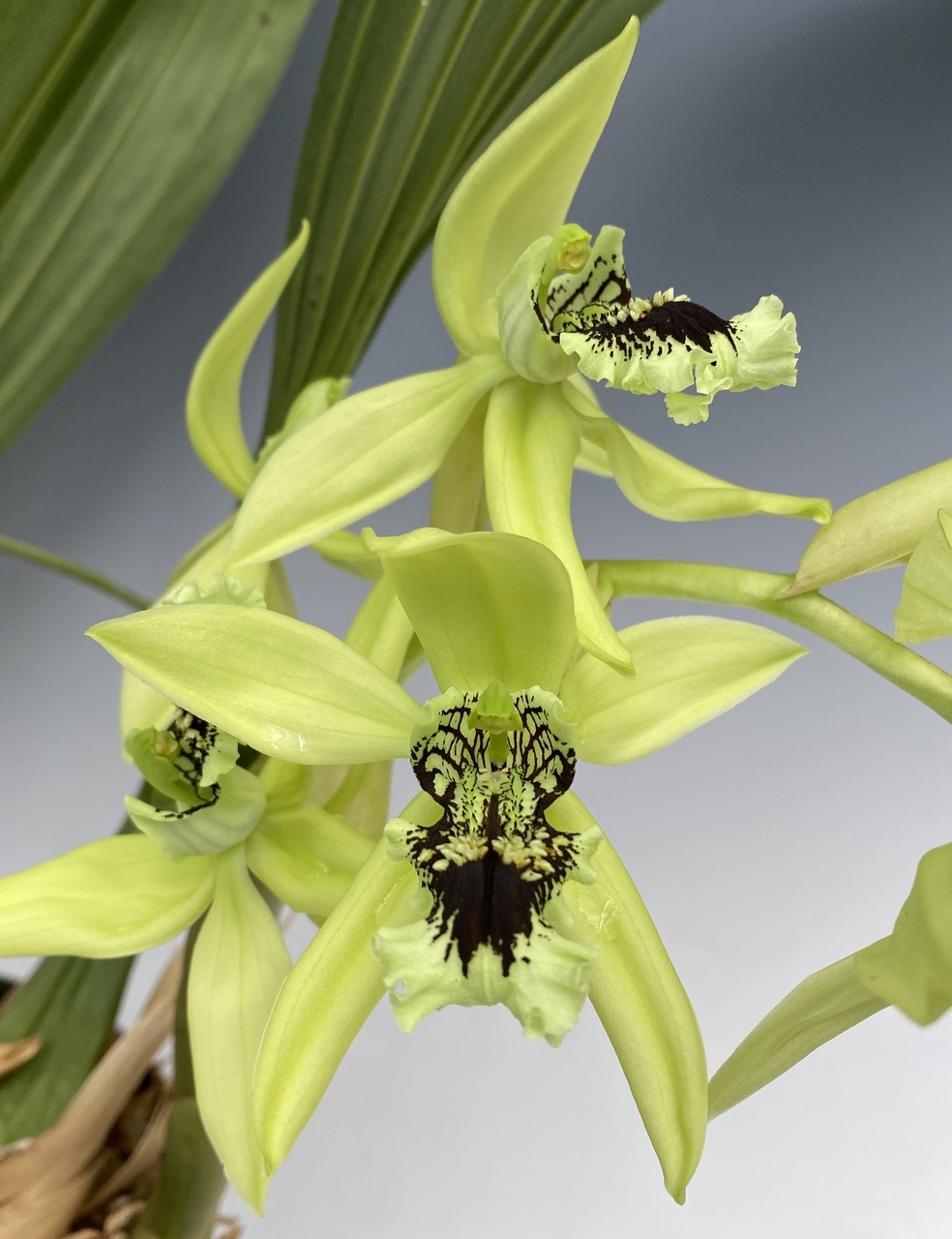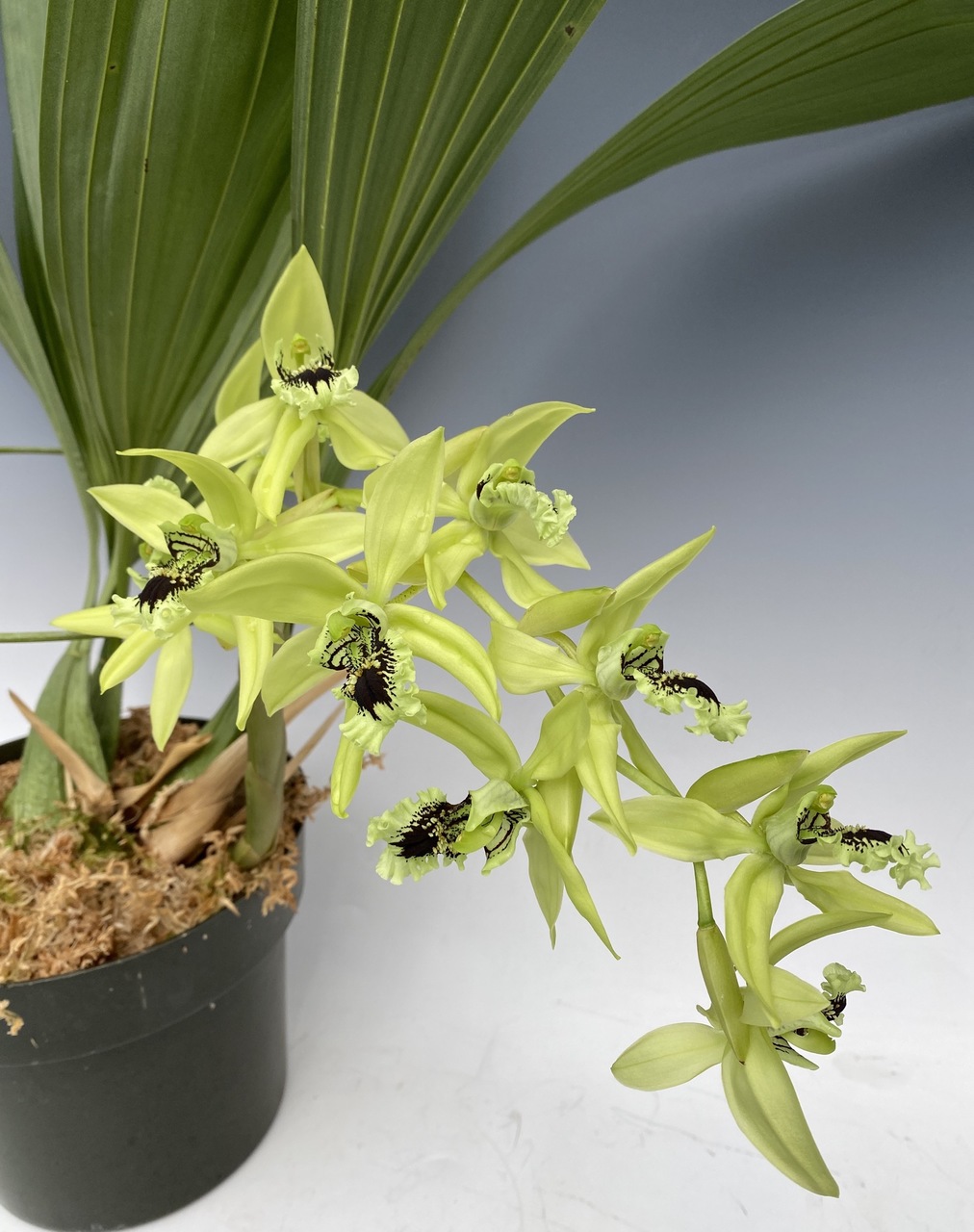Coelogyne pandurata - The Black (lipped) Orchid!
Posted by Blaine Soderholm on May 6th 2020
This blog accompanies the following video:
Above is a photo of the Coelogyne pandurata once commonly known as the black orchid. The “black” refers to its beautiful black painted lip. The dark color is a fetching contrast to the rest of the apple-green flower. The divergence of these shades together is mesmerizing. Also, if you look close at the flowers you will see tiny, almost hair-like protuberances, remarkable indeed. The flowers are large, 3-4 inches wide, and the decorated lip is long and striking. The blossoms are richly fragrant of honey and sweetness.

The genus Coelogyne (see-LODGE-eh-nee), is marvelous, and not to be passed. They have delightful pseudobulbs with spoon or pleated sail-like leaves. Colored in white, beige, and green, their cascading blooms are often pleasingly scented. They are often incredibly easy to grow and typically require no special care to bloom. C. pandurata is no exception. It grows best in low to medium light. Limited direct morning or evening sun is acceptable, but direct afternoon sun can burn leaves. C. pandurata is a very amiable plant and can take grow-space temperatures cool-to-warm. The plant is almost always in a state of active growth, so the medium should be kept moist. We grow our plants in straight sphagnum moss; but a bark mix, or even a bark/moss mix is fine, providing it doesn’t dry out. Year-round, low-concentration feeding will reward you with prolific growth and many spikes.
Coelogyne pandurata grows large very quickly, but can be divided easily. Your divisions will root readily in a pot or basket. Multiple divisions can be planted in one container to create a fast “specimen” plant. When I created my specimen plant, I placed the divisions so the new leads would grow in different directions to fill the basket. Shortly after planting, it spiked, creating a gorgeous display of successive flowering. Whichever method you choose, make sure to provide enough space in the pot for a year or two of growth, if possible. One interesting thing to note, as with many other Coelogyne, is that the flower spikes emerge from the apex of the new growth at a very early stage. After blooming, the base of the new growth swells and forms the pseudoubulb. This is interesting as most orchids blossom after a bulb matures
.

Coelogyne divisions make an excellent gift, as the black orchid is a great beginner plant, easily grown and brought to flower. If you want to get someone hooked on orchid growing, this one will do it!
Coelogyne pandurata is not commonly available. The large divisions we offer are choice and are of a variety called ‘Spring Green’. The 4-inch chartreuse blooms are adorned by a particularly large deep-black diamond that is bold and pronounced. ‘Spring Green’ truly stands out amongst other C. panduratas.
View the product page for Coelogyne pandurata 'Spring Green'.
If you thirst for more Coelogynes, please check out the other species on our website.
- Blaine Soderholm

